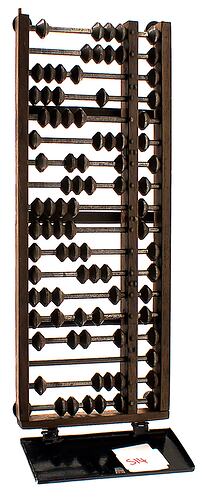Summary
Alternative Name(s): Adding/Calculating Machine.
Abacus used at the Royal Victorian Institute for the Blind, for mathematical calculations, circa 1920s-1950s.The abacus is an important tool for teaching students with a visual impairment mathematics as it teaches problem solving skills and makes a person work through a problem step by step. It is also useful for performing everyday calculations.
Physical Description
Abacus in a long wooden frame, with metal uprights and metal counters. The frame is held off the table surface by four rubber supports, and it is re-inforced by three thin black metal supports. There are 18 uprights, and a wooden rail 4 centimetres from the base rail of the frame. A small piece of black metal is attached to the left side of the frame by two hinges.
More Information
-
Collection Names
-
Collecting Areas
-
Acquisition Information
Donation from Royal Victorian Institute for the Blind (RVIB), 21 Jul 1993
-
Place Used
Royal Victorian Institute for the Blind (RVIB), Prahran, Greater Melbourne, Victoria, Australia, circa 1920s-1950s
-
Classification
-
Category
-
Discipline
-
Type of item
-
Overall Dimensions
40 cm (Length), 13 cm (Width), 3 cm (Height)
-
Keywords
Commerce, Disability Organisations, Education, Office Equipment, Sheltered Workshops, Visual Impairment
